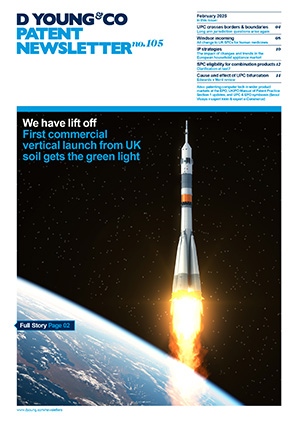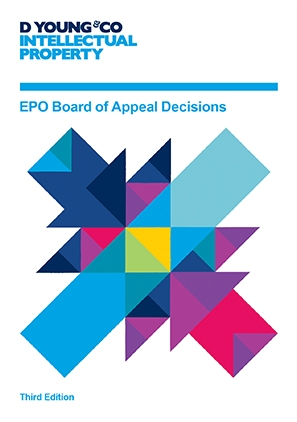New sequence listing standard ST.26: practical advice for European divisional applications
Where a patent application discloses nucleotide or amino acid sequences, a formal sequence listing must be filed, to provide the sequences in a standardised format for searching. The current format for sequence listings is governed by the ST.25 standard, however from 01 July 2022 patent offices will begin using the new ST.26 standard. Here we discuss the key differences between the two standards, and emphasise key points which must be considered for European divisional applications.
Related article issued December 2023
New sequence listing standard ST.26: an update on practical advice for European divisional applications
Read moreKey differences between ST.25 and ST.26 standards
The new ST.26 standard requires sequence listings to be filed as an XML file. The new format is intended to facilitate searching and exchange of sequence data.
Importantly, the new ST.26 standard prohibits the inclusion of sequences shorter than ten specifically defined nucleotides or four specifically defined amino acids. For example, a polynucleotide with the sequence 5’-anctggcaan-3’ cannot be included, since it only has eight specifically defined nucleotides. The new ST.26 standard also makes it obligatory to include D-amino acids, linear portions of branched amino acid sequences and nucleotide analogues.
When to use the new ST.26 format
For new PCT applications (and direct (non-PCT) European and UK applications) filed on or after 01 July 2022 the new ST.26 standard will apply, irrespective of the priority date. The old ST.25 standard will apply for applications filed before 01 July 2022, even if the sequence listing is submitted after that date.
Importantly, European divisional applications filed on or after 01 July 2022 must comply with the new ST.26 standard.
In contrast, the UKIPO has confirmed that for UK divisional applications filed on or after the 01 July 2022, the sequence listing should be filed using the standard required for the parent application.
Practical advice - European divisional applications
D Young & Co has a dedicated sequence listing team that regularly prepares sequence listings. The sequence listing team have been preparing for the new ST.26 standard and we have been updating our internal practices as necessary.
For new PCT applications (and direct European and UK applications) the changeover to the new ST.26 standard will usually be straightforward.
However, for European divisional applications, it will be necessary to convert old ST.25 sequence listings into the new ST.26 format. Although the new WIPO sequence software provides a tool to convert sequence listings, preparing sequence listings for European divisional applications may take significantly more time.
Where possible, we would advise deciding if a European divisional application is to be filed in good time whilst the parent application is still pending (for example, before the deadline to respond to the Rule 71(3) communication).
If the original ST.25 sequence listing was filed on the date of filing of the parent application, it may form part of the description. In that case, conversion of the original ST.25 sequence listing to the new ST.26 format will need to conform to the EPO’s strict requirements regarding the addition of subject-matter.
In addition, care must be taken to ensure that conversion does not result in deletion of any subject-matter.
There are several possible scenarios in which conversion of the original ST.25 sequence listing could potentially result in the addition or deletion or subject-matter, for example:
- where the original ST.25 sequence listing includes short sequences which are not included elsewhere in the application. As these sequences are excluded in the new ST.26 format, subject-matter will be lost unless specific action is taken (such as adding these sequences to the description).
- where the original ST.25 sequence listing includes “Xaa” there is no default value, and may refer to e.g. “any amino acid”. In contrast, in ST.26, the default value for “X” is restricted to any of the 22 naturally-occurring amino acids. Unless the default value is edited, subject-matter may therefore be lost.
- where the original ST.25 sequence listing includes custom features there might be no corresponding feature key in ST.26. Unless the new ST.26 sequence listing is further annotated to add custom features, subject-matter may therefore be added or lost.
WIPO has issued recommendations to deal with these different scenarios. In addition, various options are available to further mitigate the risk of adding or deleting subject matter when converting the original ST.25 sequence listing into the new ST.26 format. For example, all or part of the original ST.25 sequence listing could be added to the description. However, this may incur excess pages fees.
The most appropriate approach for European divisional applications will depend on the length and complexity of the sequence listing and the extent to which the sequences in the original ST.25 sequence listing are included elsewhere in the application. Applicants are therefore advised to contact their usual D Young & Co representative to discuss the most appropriate action for European divisional applications when the original ST.25 sequence listing formed part of the description.
Update
The EPO has changed its approach to how it handles sequence listings for new European divisional applications that are derived from parent applications filed before 01 July 2022.
From 30 November 2023 an ST.25-compliant sequence listing filed in PDF format as a “safeguard” with the divisional application will no longer incur additional page fees. The change in practice is summarised in our most recent article on the topic (see related articles).
Take-home messages
The new ST.26 sequence listing standard applies to patent applications filed on or after 01 July 2022.
For European divisional applications, the original ST.25 sequence listing will need to be converted into the new ST.26 format. Sequence listings for European divisional applications may therefore take significantly longer to prepare.
Where the original ST.25 sequence listing formed part of the description, the conversion into the new ST.26 format must neither add nor omit subject-matter compared to the parent application.



